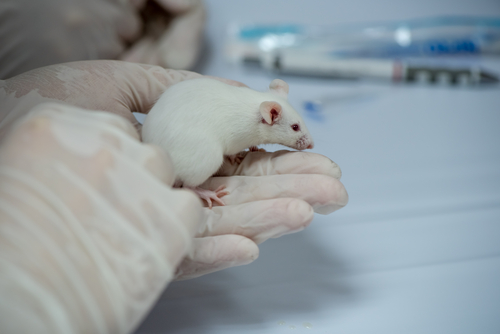Cannabinoid-derived EHP-02 Reduces ALS Symptoms in Mouse Model, Study Reports

Treatment with EHP-102, an investigational cannabinoid-derived medicine, reduced weight loss, preserved motor neurons of the spinal cord, and lowered the abnormal reactivity of astroglial cells in a mouse model of amyotrophic lateral sclerosis (ALS), new research shows.
Findings were recently published in the study, “Neuroprotective effects of the cannabigerol quinone derivative VCE-003.2 in SOD1G93A transgenic mice, an experimental model of amyotrophic lateral sclerosis,” in the journal Biochemical Pharmacology.
Cannabinoids and other players of the endogenous cannabinoid system — a widespread neuromodulatory system involved in central nervous system development and in response to in-body and environmental stimuli — are known to exert neuroprotective effects, and have been investigated in a variety of conditions, including brain trauma, spinal injury, Alzheimer’s, Parkinson’s, and Huntington’s.
Studies suggest that these compounds could also be of benefit in treating ALS. Animal models of the disease showed improvements in muscle strength, preservation of their motor neurons, reduced glial reactivity, and longer lifespans.
Recently, researchers discovered that a receptor of the cannabinoid system, called CB2, provided neuroprotection in a mouse model of ALS. Scientists believe that the observed neuroprotection may also involve the activation of the PPAR-γ receptor, which is also integrated in the cannabinoid system.
Based on this, researchers in Spain investigated the neuroprotective effects of EHP-102 (previously known as VCE-003.2), a compound derived from the non-psychotrophic cannabinoid cannabigerol using a mouse model of ALS. EHP-102, developed by Emerald Health Pharmaceuticals, works by activating PPAR-γ receptors.
Animals received EHP-102 treatment from 8 to 18 weeks of age — which is enough time for the animals to display an advanced stage of the disease.
Results demonstrated that EHP-102 reduced disease-associated weight loss, preserved spinal cholinergic motor neurons — which are markedly lost in ALS — and reduced astrocyte reactivity.
Astrocytes are star-shaped cells that outnumber neurons fivefold. Found in the central nervous system, they provide nutrients to the neural tissue and help keep the biochemical balance within the blood-brain barrier, among other roles.
Neurodegeneration creates an abnormal increase in the number of astrocytes, also known as reactive astrocytes, which are “swollen” compared with normal astrocytes.
EHP-102 also displayed an anti-inflammatory effect by decreasing the production of TNF-α and IL-1β, which are small proteins involved in the process of inflammation.
These findings support EHP-102’s neuroprotective effects via PPARγ receptor activation, “stressing the interest of these receptors as an additional neuroprotective target for cannabinoids in ALS,” the researchers concluded.
Two other cannabinoid-derived candidates by Emerald Health have also shown promise in preclinical studies of scleroderma.
EHP-101, an oral semi-synthetic cannabinoid derived of natural non-psychotropic cannabidiol, had an anti-inflammatory action and prevented skin and lung fibrosis and collagen accumulation in mice.
VCE-004.3, a molecule that’s a biological equivalent of EHP-101, activates both PPARγ and CB2 receptors, but blocks the CB1 receptor, preventing skin fibrosis and reducing inflammatory and immune responses.
“We applaud members of our scientific team for the publishing of their research in prominent scientific journals,” Jim DeMesa, MD, CEO of Emerald Health Pharmaceuticals, said in a press release. “They continue to discover potential therapeutic benefits and new indications to treat debilitating diseases, such as ALS, scleroderma, and multiple sclerosis, and we are proud to be working closely with them as we advance our initial two novel cannabinoid drug candidates into clinical-stage development.”






